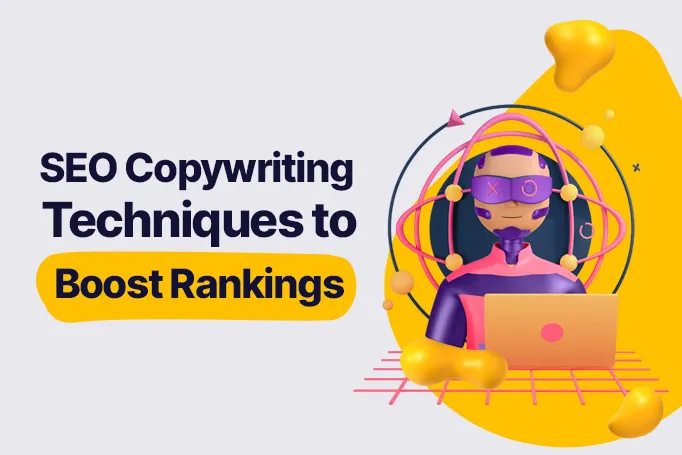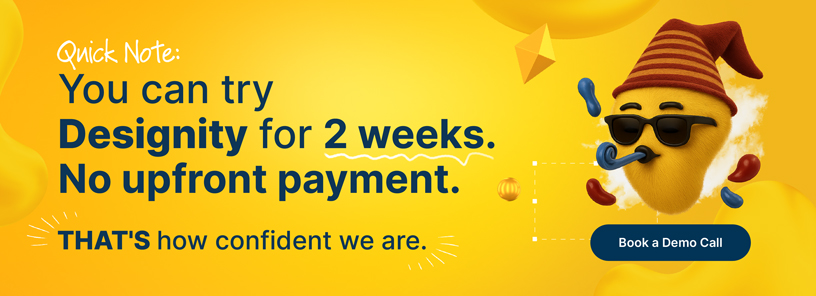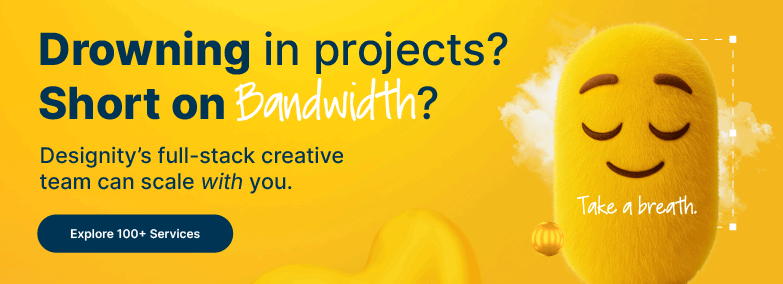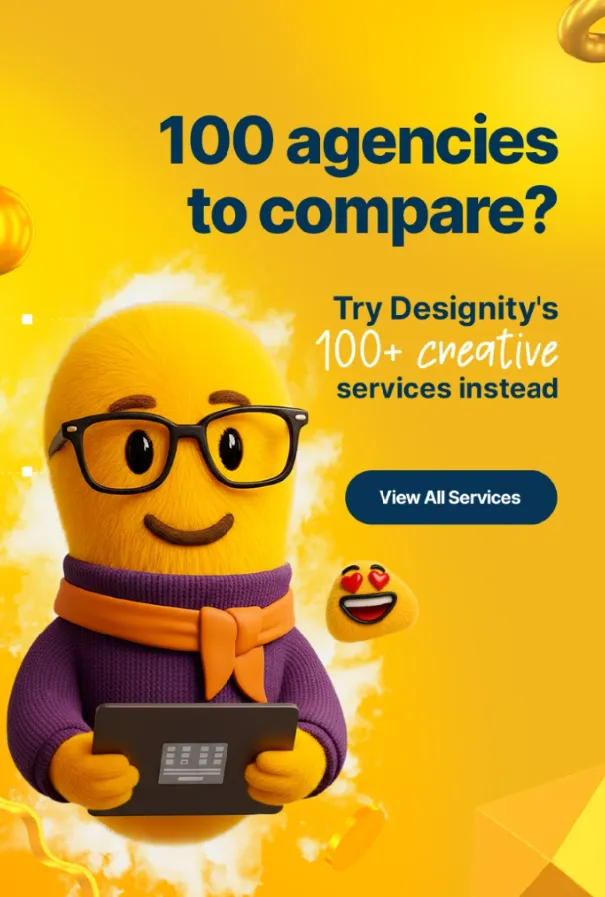In today’s digital age, having a strong online presence is essential for any business to succeed.
And one extremely vital part of that online presence is making sure that a website ranks high in search engine results.
It’s one of the best and most effective ways to get your client noticed by their target audience, keep them driving in new customers, and, ultimately, continue to increase their online sales.
This is why, as copywriters, it’s crucial to have some SEO techniques in your back pocket to not only help your clients achieve these goals but make you a more attractive hire.
So, if you’re wanting to take your SEO skills to the next level in order to be capable of having a real impact on your client’s website rankings, then this blog is here to help.
We are diving deep into the world of search engine optimization and giving you tips and tricks to use your copywriting superpowers to help your clients climb up that SEO ladder!
What is SEO Copywriting and Why is it Important?
If you’re somewhat new to writing copy or SEO, we’ll break it down before we dive in.
SEO, or search engine optimization, refers to the process of optimizing a website to improve its ranking in search engine results pages, like Google, Bing, DuckDuckGo, or Yahoo.
When someone types in a search query, they’ll use specific keywords or phrases, like “best Mexican food near me,” or “where can I buy the best wiffle bat?”
Search engines then analyze how well a webpage matches the user’s search by analyzing the presence of the relevant keywords they were searching for with the content of a website’s copy, product pages, headings, titles, and meta tags.
The more relevant the website or piece of content appears to be for that search query, the higher it’ll rank in the user’s search engine results.
These results can change over time as well because search engines also keep track of user signals like click-through rates (the ratio of users who click a link out of all of the users who viewed it), dwell time (time spent on a web page), and pogo-sticking, which is when users quickly back-click to their search results after visiting a web page (not something you want).
Positive user signals are usually indicative of a website’s relevance and quality, since if readers are sticking around, it’s more likely that they found what they were looking for on your site.
As you’ve probably guessed, negative user signals will drop a website’s ranking and positive user signals will keep them up.
This is why it’s so vital to not only incorporate SEO into your client’s websites but to do so in the right way that both human users and search bots are looking for.
To help you get there, here are our favorite SEO techniques that you can start incorporating into your writing today.
1. Pick the Right Keywords

Picking the right keywords is mission-critical since it directly impacts a website’s relevance in search engines and enables your clients to attract visitors who are genuinely interested in their offerings.
If you’re using an SEO tool, you can quickly and easily see what relevant keywords are trending and which have a very high search volume.
Don’t be a hero, though. Aim for something realistic.
If you choose a keyword with a huge volume and a sky-high difficulty rating, it may be impossible to get your client’s website to rank unless they’re already a well-known authority in their industry. Pick something you have a realistic chance of competing for and go for that.
Keep in mind that whatever type of content you’re writing can rank for multiple keywords and phrases. Don’t forget that it can be just as useful to rank for ancillary keywords too.
Ancillary keywords or long-tail keywords are the variations or related terms that are relevant to the primary keyword or topics that you’re writing for and can help out your rankings just as much.
For example, if we were trying to rank for “professional design services” we could also rank for ancillary keywords like “design solutions,” “high-quality design services,” or “professional graphic design.”
So, don’t be afraid to vary your SEO content to include these as well!
2. Match Search Intents
Users search for content based on three things:
Informational: This is when a user is looking for information or answers to specific questions. They typically start with phrases like, “how to,” “what is,” or “when.”
Example: “when was Designity founded?” or “who is Designity’s CEO?”
Navigational: This kind of search query occurs when a user is looking for a specific website. Navigation search queries are usually related to a particular brand or company.
Example: “design company with the awesome yellow blobs” or “design company with the top 3% of US-based creatives.”
Commercial: A commercial search query is usually typed in by a user who wants to make a purchase or find products and services related to a specific need. Often, they’ll type in things like, “buy”, “best”, “hire,” or “best reviews.”
Example: “where to hire a graphic designer” or “design company with best reviews”
When you’re creating content, be sure that your content actually matches your keyword’s intent, or it might have a negative effect on SEO.
For example, if a keyword or phrase we used was “where to find design services” and we tried to target that keyword in something like our pricing page, then even if we were to hit that keyword many times, we still wouldn’t have any content that ranks since that page doesn’t match the search intent.
3. Optimize Headings, Titles, Alt Tags, and Meta Descriptions
It’s not just the blogs and product pages that allow a website to rank high in search engines.
Search engines meticulously analyze various elements of a website, including things like headings, meta title tags, and meta description tags, for keyword relevance, so be sure that your keywords are strategically placed in these areas as well.
(Note that while meta descriptions don’t directly impact search engine rankings, they do impact click-through rates, which can affect your rankings.)
The alt tags for images are important too. Getting some keywords in there can be very helpful for search engines, as well as keeping your website accessible to vision-impaired website users by providing the information their screen readers need to navigate.
As always, when adding keywords or making any changes to a website’s headers, alt tags, and meta descriptions, you want to aim for something that fits with your client’s brand voice and doesn’t affect the navigation or readability of the website copy.
Odd-sounding headers and titles are a turn-off for both users and search engines alike.
4. Avoid Keyword Stuffing

There can be too much of a good thing.
Keyword stuffing refers to the excessive use of keywords or phrases in a way that negatively affects the readability of your content.
Here’s an example:
“If you’re looking for the best wiffle bat on the market, then we’re about to make your wiffle bat dreams come true. Our wiffle bats are better than other wiffle bats, giving you that great wiffle bat feel, the right wiffle bat heft, and the precision wiffle bat weight you need to take your wiffle bat skills to the next level!
Why bother with other wiffle bats when you can achieve wiffle bat greatness with our premium wiffle bats, the pinnacle of plastic wiffle bat technology. Wiffle bat: All the wiffle you can bat.”
Now, we were being pretty egregious there, but you get the picture, right? It all reads like a 10th-grade English student desperately trying to make a word count to avoid failing an assignment.
And keyword stuffing is not only annoying to users, but it sets off red flags for search engines as well.
They’re more sophisticated these days so, while a few years ago, keyword stuffing might have worked to give a website an artificial boost, now search engines may penalize a website with too much keyword density by lowering its rankings or even deindexing it completely.
Definitely something you don’t want to risk!
(Wiffle bat)
5. Remember to Write for Quality
It can be easy to get so wrapped up in SEO rankings and SEMrush scores that you forget about the quality of your work.
Please don’t. Having quality content will ultimately help your SEO ranking.
High-quality, well-written, and informative content tends to rank better in search engines. Longer content does too, so it would be helpful for your client’s website to include blog posts, articles, and expanded FAQ sections to give you plenty of opportunities to insert keywords and phrases.
Search engine companies spend millions of dollars every year, working on their bots and indexing engines. Their goal is to get their algorithms to think like people. Ultimately, the best SEO results are webpages that make sense to people, are easy and fun to read, and carry enough information to be bookmarkable by your readers.
It’s important when writing content for SEO to not lose sight of that. Don’t forget about your human readers. If you try too hard to write for Google’s current practices, you’ll lose your ranking when Google’s practices change (and they will change).
Keep the current algorithms in mind, but always write for people and never sacrifice a website’s readability and user-friendliness for SEO. If you grow as a writer and as a communicator, the search engine rankings will reflect that over time.
6. Use an SEO Tool
We’ve been mentioning these throughout the article, but SEO tools are software or online platforms that are designed to help you optimize content for search engines.
These tools offer various features to help your writing rank higher and perform better. Here are some of our favorites:
SEMrush: SEMrush is a digital marketing tool that offers a wide range of features, including SEO tools like keyword research, on-page SEO analysis, backlink analysis, and competitor analysis.
Ahrefs: Ahrefs is a comprehensive SEO toolset with features like keyword research, backlink analysis, content optimization, and competitor analysis.
Google Keyword Planner/Google Analytics: Both of these Google tools can offer you plenty of assistance with your SEO strategies. Google Keyword Planner can help you with keyword research and planning, while Google Analytics can help you track your website’s SEO performance.
Screaming Frog: Screaming Frog is a website crawler that can help you improve your site's SEO by auditing for common issues.
Sitebulb: Another website auditing tool. Sitebulb can help you analyze data from an SEO perspective for improved performance and visibility.
In addition to these tools, some consider hashtag usage on social media to be part of a holistic SEO strategy. For that, we recommend Hashtag Expert for easy and effective hashtag research.
Remember, while these tools can be very helpful to you and provide valuable data, recommendations, and insights, they are limited.
They don’t guarantee rankings, nor can they predict with 100% accuracy how well your content is going to perform.
Be sure to regularly monitor your content and make adjustments as needed based on actual performance and user feedback. This is the best way to achieve and maintain those tip-top search engine rankings your client is looking for.
More SEO Copywriting Tips to Keep in Your Pocket

Ranking high in search engines is a difficult thing to accomplish! Here are some more tips to keep in your back pocket and sprinkle throughout your writing.
Mix it Up: Use images or other media on your client's webpage or blog posts, as well as backlinks to rank higher. Backlinks from reputable websites give a website more credibility and could positively impact SEO ranking.
Positive UX/UI: Search engines factor in things that offer a positive user experience, like page loading speed, mobile-friendliness, and easy navigation, so be sure every aspect of your client’s website is optimized!
Use CTAs: If users are looking for informational content, it can be helpful to include CTAs throughout to move them along to something they may be looking for next. Use simple links, buttons, or images to get your client more page views, decrease their bounce rates, and send those positive signals to search engines to help their ranking.
Site Authority: Search engines evaluate the overall authority of a website and take into account factors like domain age and overall link profile. Make sure your client knows that they must be patient and give it time if they’re just starting out.
<div class="c-blog_comp-cta cc-component-2"><div class="c-blog_comp-cta-left"><div class="c-blog_comp-cta-left-wrap"><img src="https://global-uploads.webflow.com/61cdf3c5e0b8155f19e0105b/63695243d096983691046ac3_Potential-Creative.png" loading="lazy" alt="" class="c-blog_comp-cta-left-img"></div></div><div class="c-blog_comp-cta-right cc-dark"><div class="c-blog_comp-content"><div class="c-text-wrapper cc-mb-32"><div class="c-title-4 cc-bold"><strong>Like to work as a freelancer with consistent income?</strong></div></div><div class="c-text-wrapper"><div class="c-text-2">Designity's collaborative model is designed to give you all of the perks of being a freelancer without the income instability.<br></div></div></div><div class="c-blog_comp-wrapper"><a href="http://designity.com/creatives" target="_blank" class="c-button w-button"><strong>Join Our Creative Community</strong></a></div></div></div>
The Power of Your Words
Mastering the art of SEO copywriting is something that takes some time.
But don’t give up! Good copywriting is the process that can turn a practically invisible website into one that eventually makes it into the first few Google search results!
With some dedication and consistent effort, you can use these techniques outlined above to improve your client’s website rankings, help them attract more visitors, and achieve their digital marketing goals!
Use these techniques, unleash your creativity, and watch your client’s websites soar to new heights!
What’s your favorite SEO copywriting technique?

























